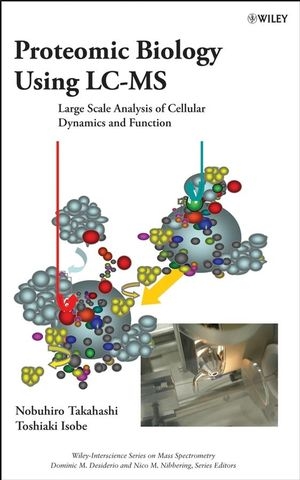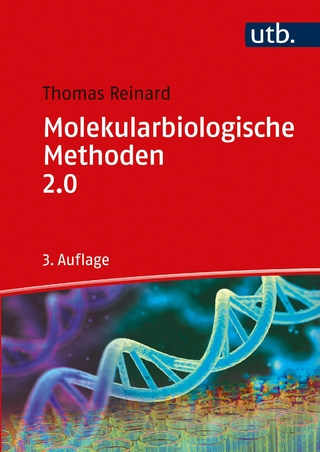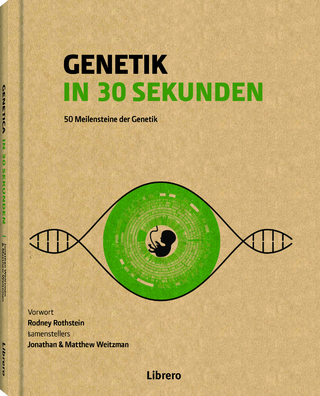
Proteomic Biology Using LC/MS
Wiley-Interscience (Verlag)
978-0-471-66258-7 (ISBN)
- Titel z.Zt. nicht lieferbar
- Versandkostenfrei innerhalb Deutschlands
- Auch auf Rechnung
- Verfügbarkeit in der Filiale vor Ort prüfen
- Artikel merken
This is one of the first books to focus on the dynamic aspect of proteomes. The book introduces proteomics to the newcomer, reviews the theoretical aspects of proteomics and its state-of-the art technologies, along with a number of biological applications using "classical" proteomic technology. The book also presents a new concept, the Dynamome, or the expression of a comprehensive molecular set that participates in the whole dynamic process of a series of cellular events.
Nobuhiro Takahashi, PhD, is a Professor of Applied Biological Science in the Department of Agriculture at Tokyo University of Agriculture and Technology. Toshiaki Isobe, PhD, is a Professor of Biochemistry in the Department of Chemistry at Tokyo Metropolitan University.
Introduction. Chapter 1. Overview of Proteomics.
What is the proteomics?
1-2 Proteomic analysis using two-dimensional gel electrophoresis (2DE) and mass spectrometry .
1-2-1 Protein separations by 2DE.
1-2-2 Development of the technologies for protein identification .
1-2-3 The protein identification based on gel separation and mass spectrometry.
1-3 Strategies for characterizing an entire proteome and understanding the proteome function.
1-3-1 Modification-specific proteomics.
1-3-2 Activity-based profiling.
1-3-3 Sub-cellular (Organelle) proteomics.
1-3-4 Machinery [complex (interaction)] proteomics.
1-3-5 Dynamic proteomics.
Chapter 2. Proteomic Tools for Analysis of Cellular Dynamics.
2-1 LC-BASED PROTEOMICS TECHNOLOGIES.
2-1-1 LC system for peptide separation .
LC-MS interface.
ESI apparatus .
Micro- and nano-capillary columns.
Packing materials.
1D-LC system.
Application of 1D-LC-MS/MS to shotgun analysis of moderately complex protein mixtures.
Experimental example 2-1.
2D LC-MS system.
Experimental example 2-2.
2-1-2 Application of LC-MS methods to functional proteomics.
Sub-cellular (organelle) using a cell-surface modification reagent and cell fractionation.
Experimental example 2-3 .
Modification proteomics.
Phosphorylation site mapping.
Experimental example 2-4.
Glycosylation site mapping.
Experimental example 2-5.
Ubiquitinated protein identification by using ubiquitin-specific antibody .
Experimental example 2-6.
2-2 Development of quantitative proteomics.
2-2-1 Isotope labeling for quantitative analysis using MS.
in vivo labeling.
in vitro labeling.
2-2-2 Quantitation strategies for LC-MS analysis of isotope labeled peptide mixture and software for computer analysis.
2-2-3 Label free quantitation software.
2-2-4 Absolute quantitation.
Method using stable isotope labeled reference peptides.
Method without using internal standards.
Chapter 3. Dynamics of Functional Cellular Machinery: From Statics to Dynamics in Proteomic Biology.
From statics to dynamics in proteomic biology.
3-1 DYNAMIC ANALYSIS OF CELLULAR FUNCTION.
3-1-1 Strategy for dynamic analysis of cellular machineries (multi-protein complexes).
Approach collecting time dependent data.
Approach utilizing stage specific protein association.
3-1-2 Methods for the isolation of a cellular machinery/multi-protein complex.
Affinity-tag purification.
Affinity chromatography with an antibody- or a protein-immobilized column.
Immuno-affinity purification using antibody-fixed beads.
Experimental example 3-1.
Pull-down purification using immobilized protein beads.
Experimental example 3-2.
3-1-3 Cellular machinery (multi-protein complex).
3-2 Dynamics of Ribosome Biogenesis .
3-2-1 Snapshot Analyses of Preribosomal Particles in Yeast .
3-2-2 Snapshot Analyses of Preribosomal Particles in Mammals.
Experimental example 3-3.
3-2-3 Quantitative (dynamic) analysis using isotope labeled reagents.
Experimental example 3-4.
3-2-4 Orthogonal Comparison of the Process of Ribosome Biogenesis.
3-3 Dynamic analyses of Sub-cellular structures.
3-3-1 Proteome dynamics of the nucleolus.
| Erscheint lt. Verlag | 16.11.2007 |
|---|---|
| Reihe/Serie | Wiley-Interscience Series on Mass Spectrometry |
| Sprache | englisch |
| Maße | 163 x 241 mm |
| Gewicht | 517 g |
| Themenwelt | Naturwissenschaften ► Biologie ► Genetik / Molekularbiologie |
| Naturwissenschaften ► Biologie ► Zellbiologie | |
| Naturwissenschaften ► Chemie | |
| ISBN-10 | 0-471-66258-5 / 0471662585 |
| ISBN-13 | 978-0-471-66258-7 / 9780471662587 |
| Zustand | Neuware |
| Haben Sie eine Frage zum Produkt? |
aus dem Bereich


